Scientists map ancient lost continent called Zealandia, now submerged beneath the Pacific Ocean
Towering titanosaurs and other dinosaurs once roamed the vast, mountainless lands between the east of Australia and New Zealand on a lost continent called Zealandia

READING LEVEL: ORANGE
Scientists have mapped a huge, ancient continent off Australia’s east coast.
At one time in Earth’s history the continent, called Zealandia, was home to animals that roamed between the east of Australia, New Zealand and the Pacific Ocean island of New Caledonia.
Most groups of dinosaurs, including the towering titanosaurs, inhabited its mountainless, low-lying landscape.
Today, 94 per cent of Zealandia lies underwater. If we drained the oceans, we could see its 4.9 million sqkm stretching across the South Pacific Ocean.
Though scientists have known about it for decades, it’s only been in recent years that Zealandia has been thought of as a continent — the planet’s youngest, smallest, thinnest and most submerged continent.
New maps just released by New Zealand’s geological* research institute GNS science, along with a new interactive website called E Tūhura – Explore Zealandia, allow us to see it in much closer detail.
The maps cover both bathymetry – the shape of the ocean floor – along with the continent’s tectonic* origins.
When the supercontinent Gondwana broke up into five continent-sized pieces, it created South America, Africa, Antarctica, India, Australia and Zealandia.
This happened gradually over 150 to 50 million years ago like a reverse jigsaw puzzle, leaving buried clues to help geologists piece it back together.
Scientists have learned a lot about Zealandia by studying its geology. It has older foundations of granite and another type of rock called greywacke*, and a cover of younger sedimentary* and volcanic rocks, which was very similar to that of its former neighbours Australia and Antarctica.
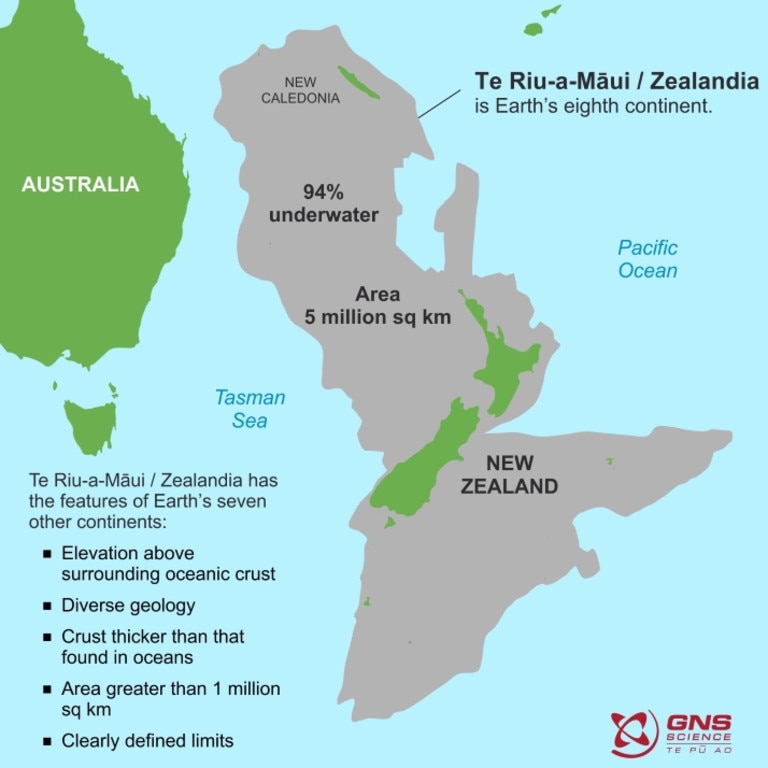
WHAT HAPPENED TO ZEALANDIA
Scientists now know that for at least 400 million years, up to about 100 million years ago, the Pacific Plate (one of the Earth’s tectonic plates) was pushed under the eastern edge of Gondwana.
Sediments piled up along the edge of the Pacific Plate and were squashed together to make rock by the colliding plates.
About 100 million years ago, Gondwana was stretched and broken up. Eventually a large piece broke off that became Zealandia.
At first, Zealandia was all land but then it slowly sank as the Tasman Sea grew, and it continued to be stretched and thinned until about 25 million years ago, when it was mostly under the sea.
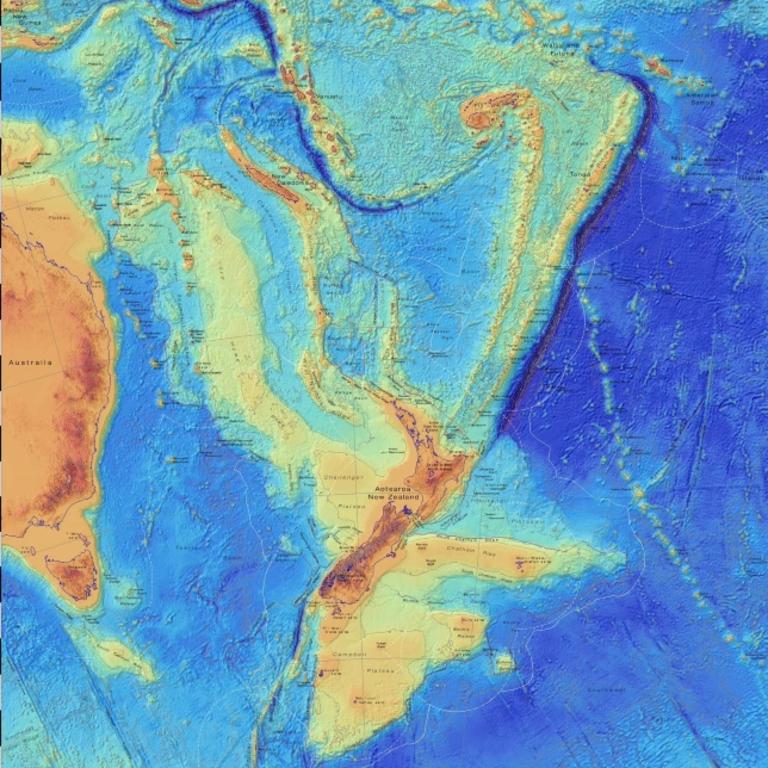
HAS IT ALL DISAPPEARED?
Whether all of Zealandia sank below the ocean has long been debated by scientists.
Fossil evidence and still-living ancient species such as New Zealand’s tuatara reptiles and kauri trees suggest that some small Zealandia islands survived the great drowning.
Even if just 1 per cent of Zealandia stayed dry, that would still represent more than 2500 sqkm, an area more than 1000 times the surface area of Stephen’s Island, between the North and South islands of New Zealand, where more than 30,000 tuatara currently live.
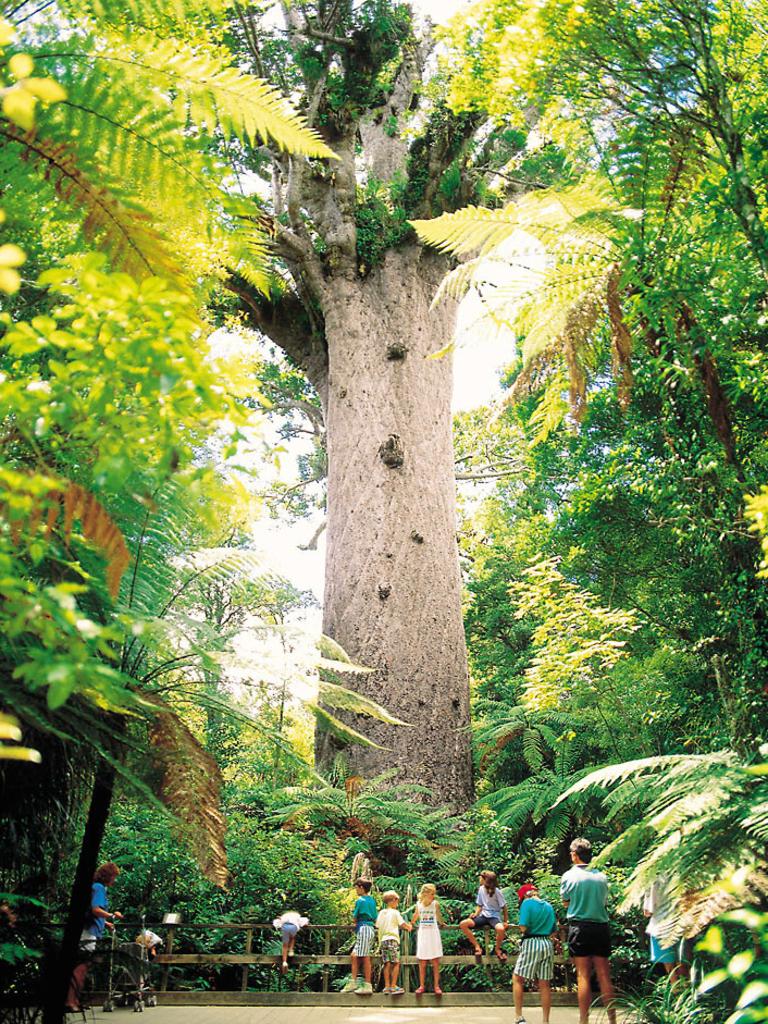
WHY MAP ZEALANDIA?
Studying modern-day Zealandia is difficult because most of it is more than a kilometre below the sea but the new maps have helped us better understand Zealandia.
“We’ve made these maps to provide an accurate, complete and up-to-date picture of the geology of the New Zealand and southwest Pacific area – better than we have had before,”
geologist Dr Nick Mortimer said.
“Their value is that they provide a fresh context* in which to explain and understand the setting of New Zealand’s volcanoes, plate boundary and sedimentary basins.”
Program leader Vaughan Stagpoole said the website provided the perfect way for users to explore geoscience data from their homes.
“Users can zoom and pan around different thematic* geoscience webmaps of the region,” he said.
“They can readily view and interrogate* the maps and turn layers on or off. They can also query features in the layers and generate custom maps of their own.”
This article first appeared in the New Zealand Herald and is republished with permission.
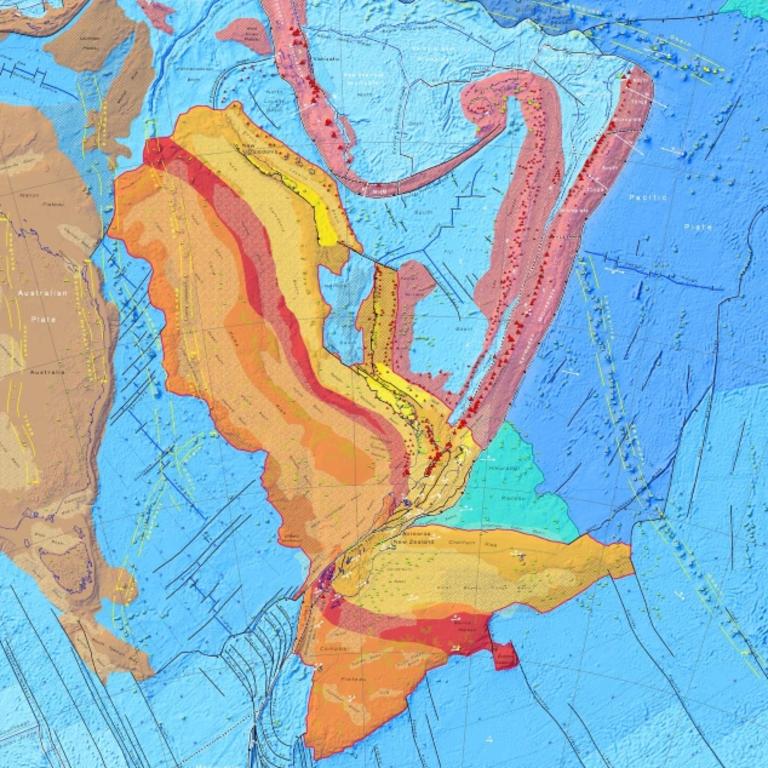
GLOSSARY
- geological: to do with the geology of something, which is the study of the structure and rocks
- tectonic: to do with the structure of the Earth’s crust
- greywacke: coarse sandstone with some clay
- sedimentary: to do with rock that formed because of settling of sand or silt out of the air or water
- context: viewed with reference to other things
- interrogate: study
- thematic: in a particular theme
EXTRA READING
Giant meat-eating dinosaur roamed Australia
Human-sized extinct penguin found
Giant parrot nicknamed ‘Squawkzilla’ found
New, much older stegosaurus species found
QUICK QUIZ
- What and where is Zealandia?
- What percentage of Zealandia is now underwater?
- Explain what bathymetry is. What other kind of mapping of Zealandia have the scientists done?
- Which ancient, giant trees still live in New Zealand from Zealandia?
- What is the main reason it is difficult to study modern-day Zealandia?
LISTEN TO THIS STORY
CLASSROOM ACTIVITIES
1. Zealandia
Using a blank outline of the continent of Australia and Zealandia, like the one below, write as many facts as you can in dot points about this continent that you learnt from the Kids News article. Also focus on how it originally linked to Australia and what common traits they had.
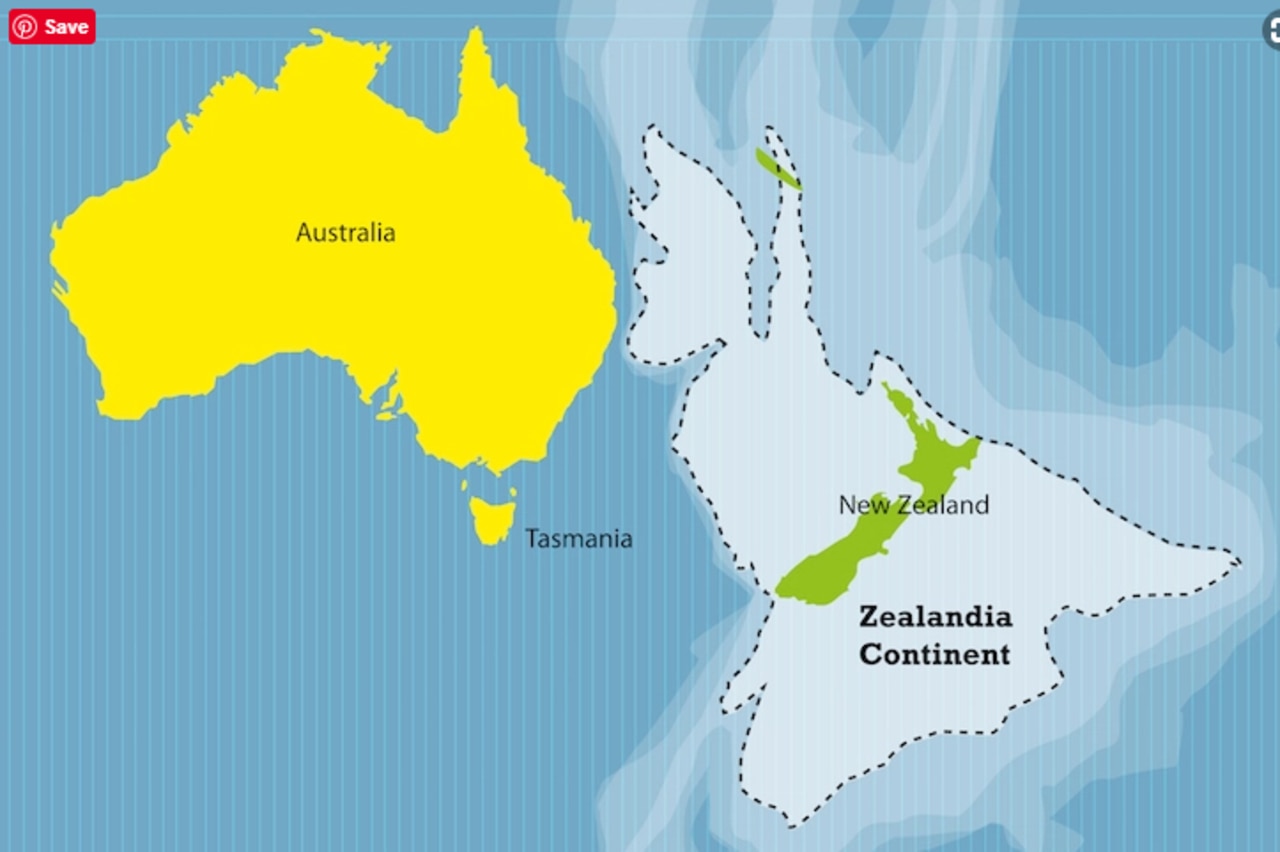
Time: allow 15 minutes to complete this activity
Curriculum Links: English, Geography.
2. Extension
What is your opinion as to whether part of Zealandia still exists or do you think it is all buried underwater? Explain your reasons why.
Time: allow 10 minutes to complete this activity
Curriculum Links: English, Geography, Critical and creative thinking
VCOP ACTIVITY
Connective Collection
After reading the article, with a partner, highlight as many connectives as you can find in pink. Discuss if these are being used as conjunctions, or to join ideas and create flow.
HAVE YOUR SAY: What would you like to make a map of?
No one-word answers. Use full sentences to explain your thinking. No comments will be published until approved by editors.

